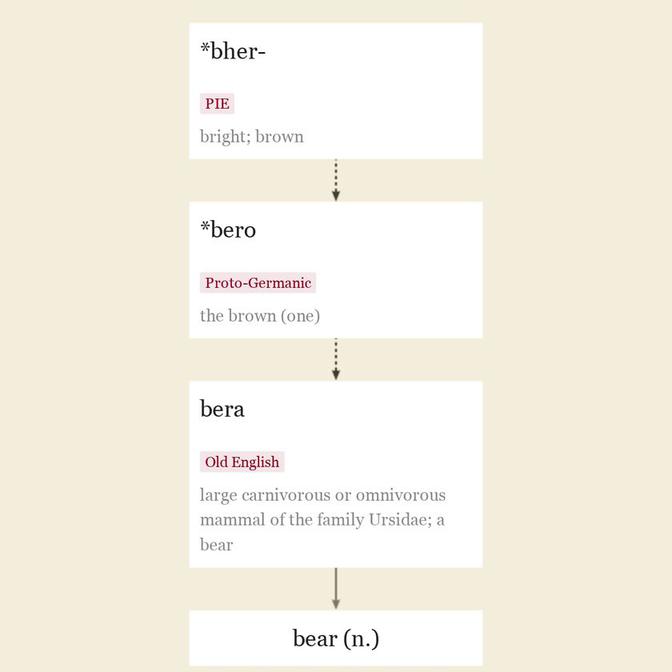bearskin n.
also bear-skin, "
Entries linking to bearskin

"
Greek arktos and Latin ursus retain the PIE root word for "
Used of rude, gruff, uncouth men since 1570s. Symbolic of Russia since 1794. The stock market meaning "
c. 1200, "
The usual Anglo-Saxon word is hide (n.1). The meaning "
All the carnall beauty of my wife, Is but skin-deep.
[Sir Thomas Overbury, "A Wife," 1613; the poem was a main motive for his murder]
The skin of one's teeth as the narrowest of margins is attested from 1550s in the Geneva Bible, a literal translation of the Hebrew text in Job xix.20. To get under (someone's) skin "
Ful of fleissche Y was to fele, Now ... Me is lefte But skyn & boon. [hymn, c. 1430]
updated on April 25, 2017